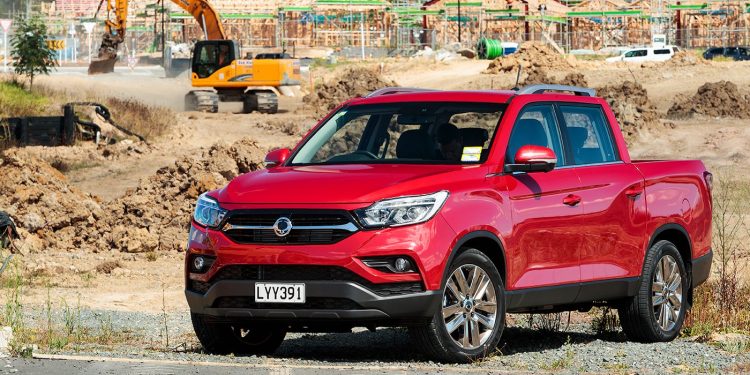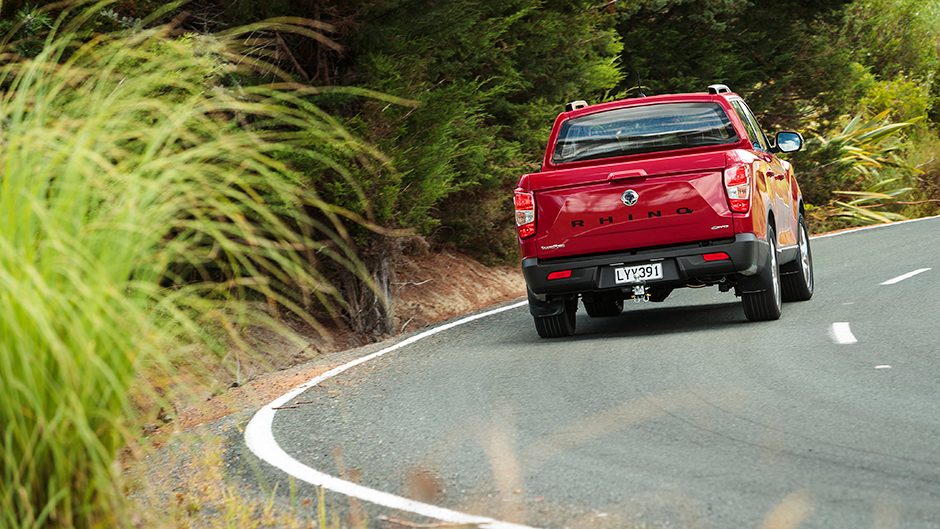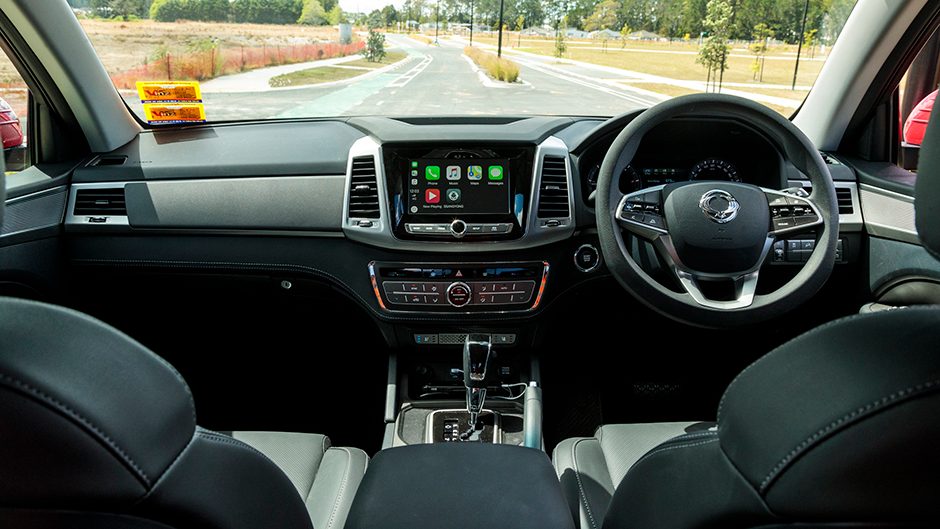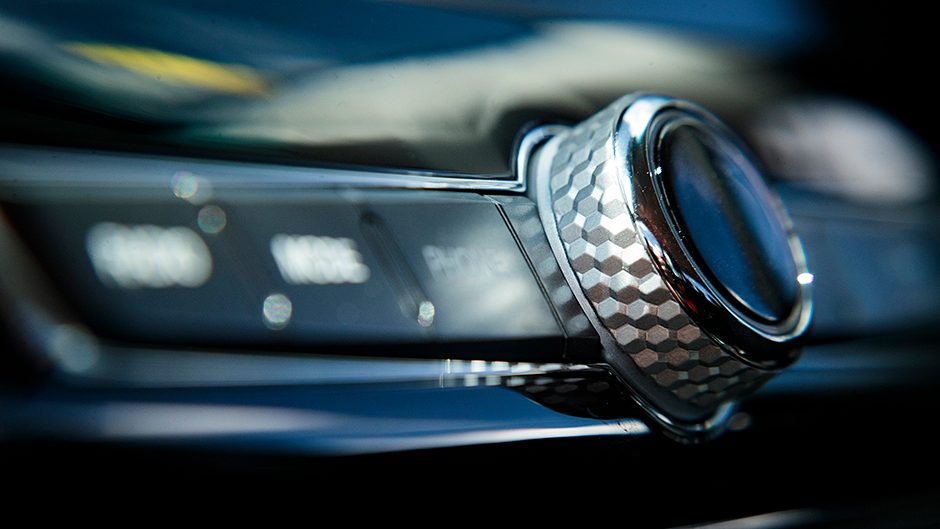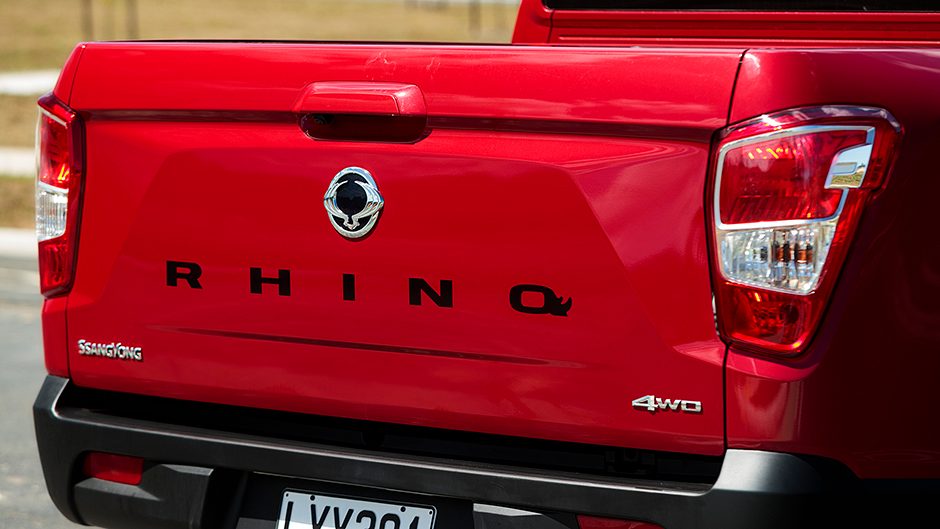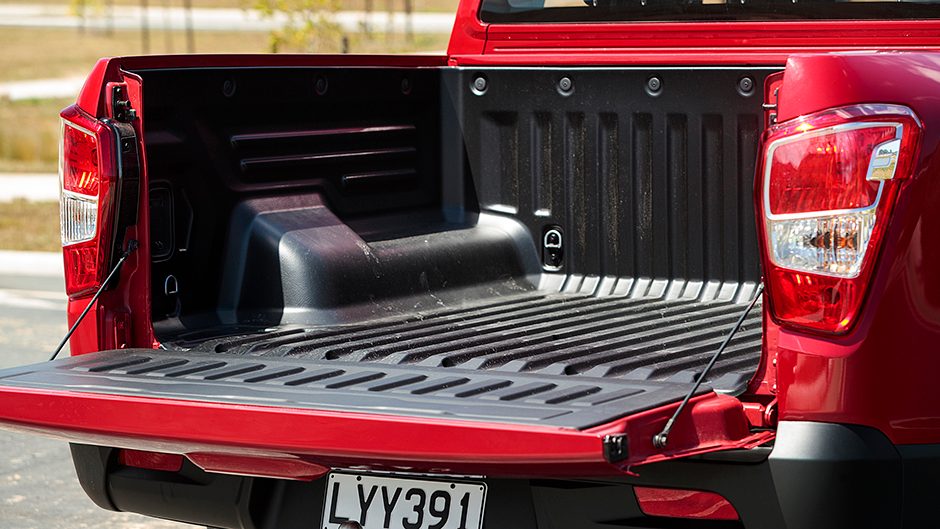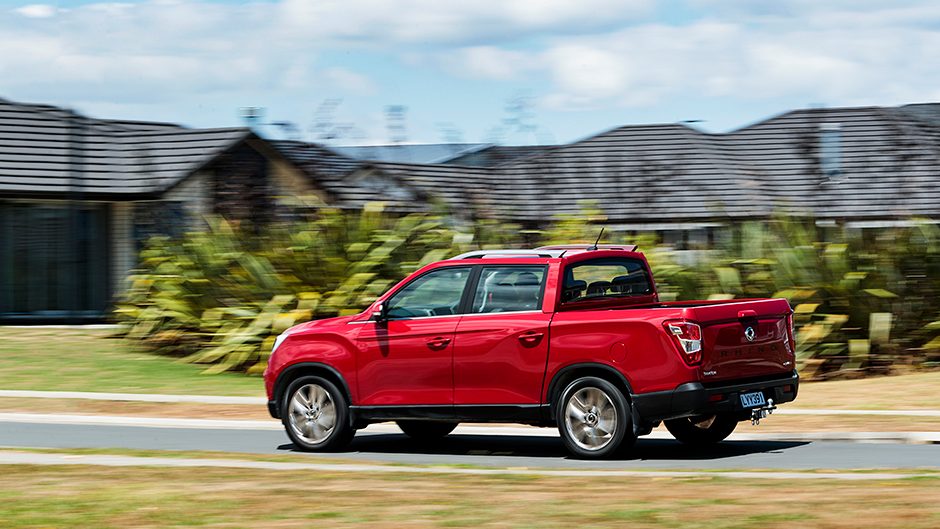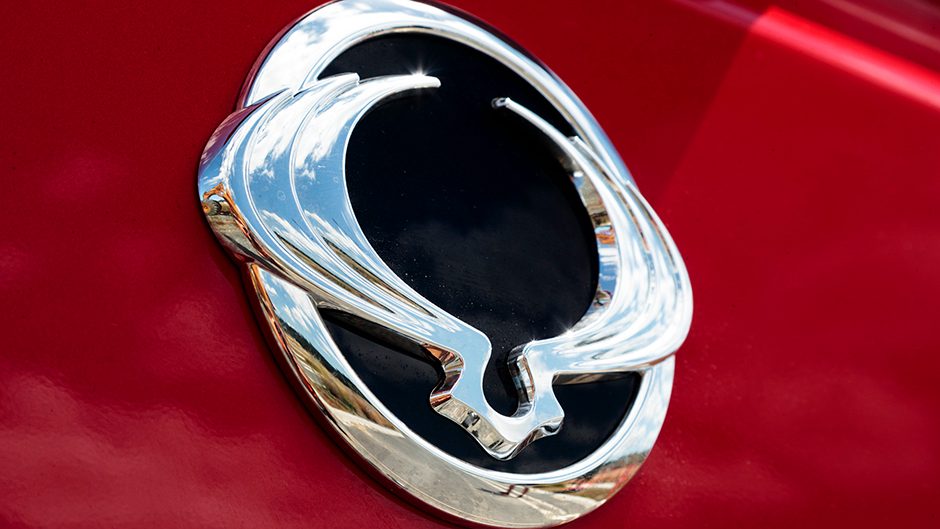2019 SsangYong Rhino SPR review
Words Kyle Cassidy | Photos Tom Gasnier
Actually SsangYong doesn’t charge much for its new Rhino, an all-new rig wearing a sharp price tag. So is it the best value ute on the market?
SsangYong’s latest ute, the new Rhino, has been some time coming. The local importer had hoped to have it charging into showrooms midway through 2018, but supply was hard to come by, demand from other markets causing the delay. And so SsangYong NZ has been without a ute to sell for the past six months, with stocks of the old Actyon Sport drying up.
We saw the new ute, then called Musso, at Fieldays, and they managed to fill a few orders for the top of the line SPR, but it’s only now that the supply has freed up and they are able to offer the full line-up. So what’s with the name change then?
In every other market, SsangYong’s latest ute (it’s model code is Q200 for the spotters) is either called the Actyon Sport or Musso, the latter being Korean for rhino. No one here really liked the Musso nameplate, and the idea of changing the name locally is credited to Leigh Hart, aka That Guy, director of the creative agency used by SsangYong NZ. He suggested instead of trying to explain that Musso meant Rhino, why not simply change the name?
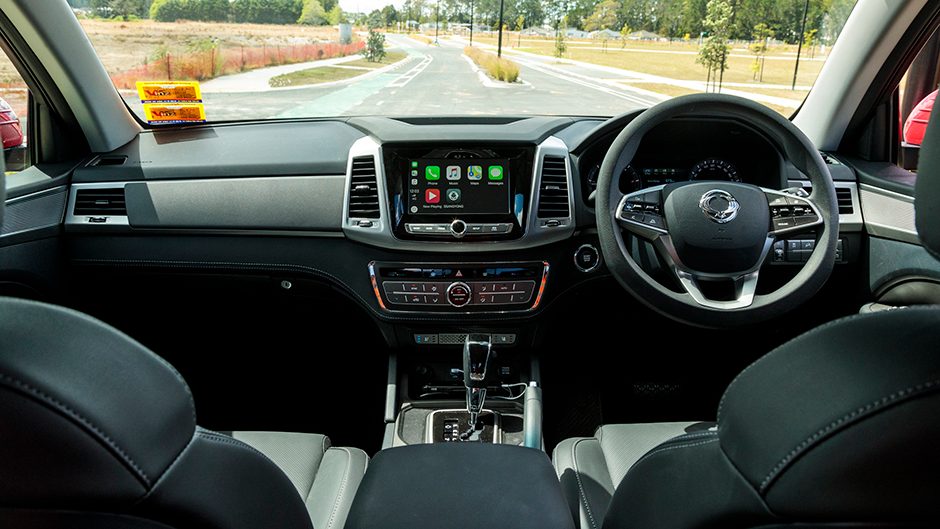
And so now, all New Zealand Q200’s have Rhino, complete with horns sprouting from the O, emblazoned across the tailgate. The Rhino replaces a ute that can trace its lineage back to 2006. This is what they are calling the fourth generation of the SsangYong ute, the Musso Sports of 2002 being the first, while the major facelift of the Actyon Sport in 2012 was the third.
But this one is all-new and is based on the latest Rexton which was released just last year. The ladder chassis is stretched in the wheelbase with wishbones up front and a five-link rear end with a Panhard rod and coil springs. While it’s bigger all round compared with the old Actyon Sport, it’s still not as large as some of its main competitors.
This they say was something customers liked about the old ute. It’s now just shy of 5.1m long overall, about 100mm longer than the Actyon Sport, but still 200-300mm shorter than the competition. It’s compactness stems from its tray; it’s the shortest deck in the class at 1300mm long, where the others are at least 1500mm in length. It gets a tray liner, power sockets, and tie downs.
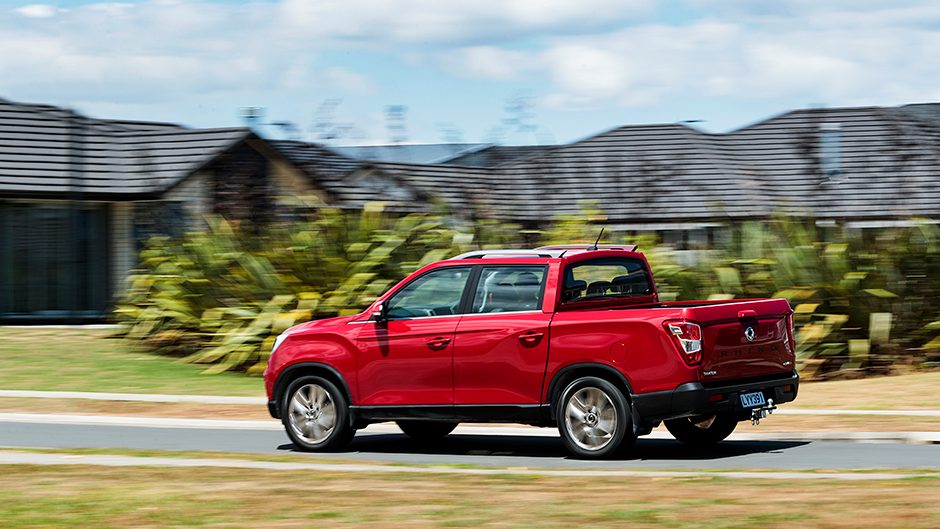
The tailgate locks remotely off the key fob while it has a helper spring requiring less muscle work to shut it. The load height makes retrieving things from the deck easier, it being a good 170mm lower than the BT-50 we had in the car park. However if you want something bigger, SsangYong is covering its bases and will offer an XL Rhino touting the longest tray in the class at 1610mm. The XL has a 110mm longer wheelbase, and is 5.4m long with 200mm more on the rear overhang.
All that extra length goes into the deck. This model will ride on leaf springs at the rear, bumping the payload from 850kg to 1060kg. They expect the LWB versions will wear a premium of not quite $3000 when the first of them arrives next month. The entry-level Rhino is a rear driver powered by a 165kW/350Nm 2.0-litre turbopetrol. While petrol utes are scarce, it gives the Rhino range a low entry price point of under $30k.
At one stage, 45 per cent of Actyon Sport sales were petrol. And that’s when they could only offer a manual transmission while this time around there’s an auto, and the Rhino comes with a higher spec level. The mid-spec Sport and top SPR, featured here, both use the 133kW 2.2-litre diesel, the Sport manual with 400Nm, while the auto can handle 420Nm.
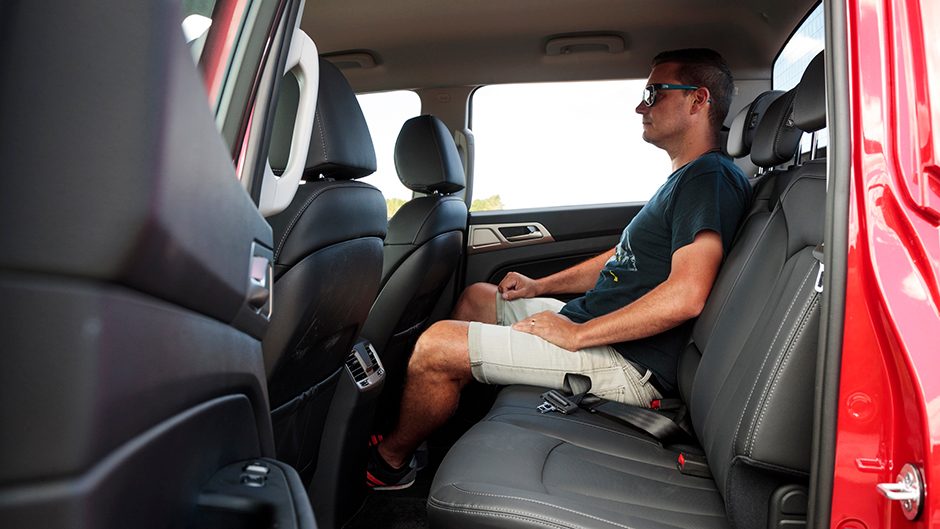
Rhino’s powertrain is largely the same as that in the Rexton, though the auto is a six-speed Aisin unit. Selectable 4×4 is also standard on these, with a low-range. The tow capacity is 3.5 tonnes braked, and 2.8 for the petrol. All come with a five-year/100,000km transferable warranty. Rhino gains the usual benefits of a new design with more high strength steel used in both the body and frame, the latter with improved crash structures and more resistance to twist.
The body has superior sealing to suppress engine noise and the wheel arches are lined for a reduction in road noise. And it is a quiet operator, the diesel engine hushed, even at start-up, and refined in terms of vibration while tyre roar on coarse chip is subdued. The torque builds progressively, the delivery not suffering unduly from lag, unless you’re trying to gun it.
Initially it feels a little lethargic from idle until 1800rpm when a real surge arrives, which can chirp the rear treads. The six-speed auto is programmed for creamy changes, but generally sorts itself well enough. When the odd burst of added speed is required it’s best to bury the boot to ensure it kicks down smartly.
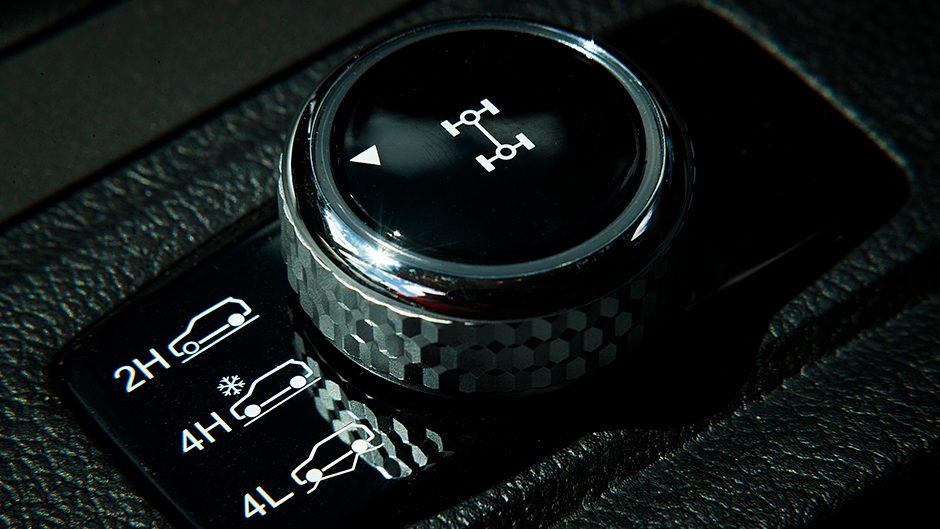
There’s a Power mode for the transmission which sees it rev out higher, the engine pretty much done by just past 4000rpm however. If you need yet more, best whack the shifter over to the manual gate. Here it will still shift up automatically but it’s better at keeping the engine spinning, and gives the trans a more ‘locked up’ feel for improved response.
This isn’t a speedster in the ute world, but there’s enough poke to get overtaking done. The Rhino steers well for a pick-up, the hydraulic set-up loading up nicely in bends with some life to the action. While there’s a degree of initial roll heading into turns, it then sets itself and the front end resists the urge to push while it’s stable mid-bend too.
The one irksome feature is the ride, as unladen it tends to jiggles about. This is more pronounced in the SPR model with its bigger 20-inch wheels.
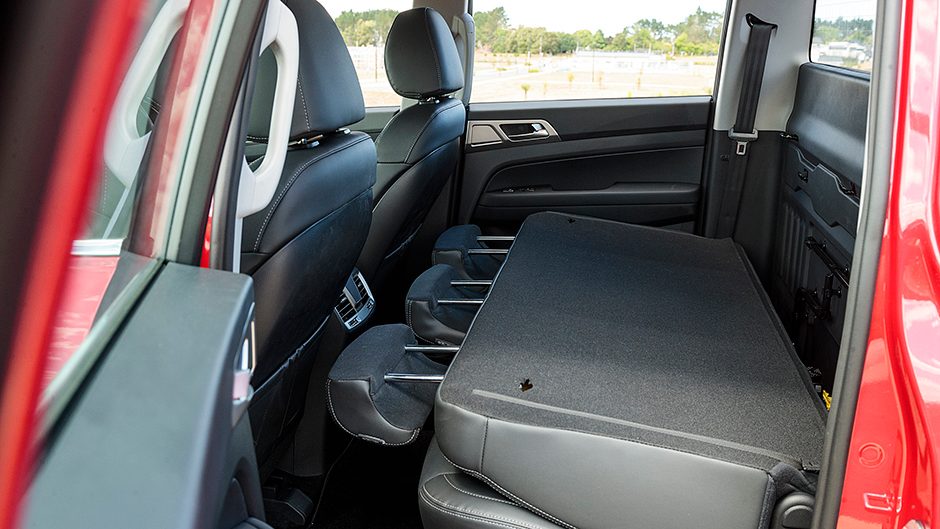
A localised tune of the dampers might help, as Rexton sure doesn’t suffer the same ride issues. It does go better with a load on board. We filled the tray with a half a cube of fill, and it settled it some, though didn’t cure it. Rhino’s Rexton roots are evident from the look, and the cabin. The SPR has one of the finer cabs in the class; we’d say the finish and trimmings are better than those offered in the $90k VW Amarok.
There’s at least some soft touch plastics, and those that are hard are far from harsh. The front seats are comfy and trimmed in soft Nappa leather. Power adjustment is a feature, as are heaters and ventilators. There’s no side steps required to climb on board here, while the doors cover the sills completely too, for a clean and easy entry.
While ground clearance is listed at 215mm, it doesn’t seem as high riding as other 4×4 utes. If that’s a concern, SsangYong NZ will be offering a lift kit as an optional extra. This top model comes with a smart key, a surround view camera system and dual zone air. An eight-inch touchscreen is standard on the Sport and SPR models and you get CarPlay and Android Auto.
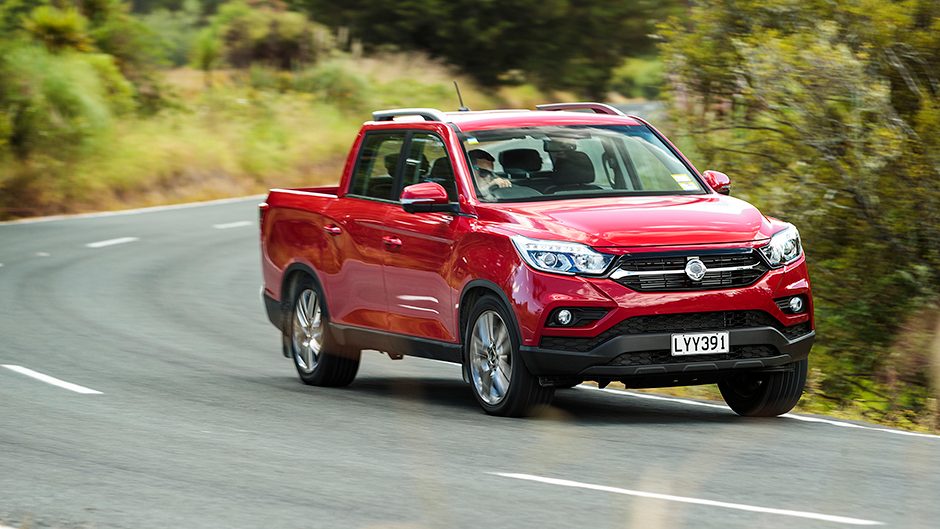
The safety basics are present while the SPR model gets six airbags with full length curtains. There’s plenty of space in the rear (and seat heaters too) while the seat back offers more of a recline than the norm, though the presence of a lap belt in the centre needs sorting ASAP. There are Isofix points and top tethers too. There’s no flip up seat squabs in the rear but the seat back does fold down.
SsangYong’s advertised pricing starts at $25,990 but excludes GST. So, with the 15 per cent added, the entry-level rear-drive petrol starts at $29,888 for the six-speed manual, the auto at $34,488. The Sport Diesel adds switchable 4×4 and is $40,238 as a manual, with the auto being $42,538. The top SPR is $50,013.
After a bit of haggling, you could likely buy two of these for the price of one top spec German ute. While it doesn’t offer the same bragging rights, it does highlight the outstanding value it represents in the ute market.
| Model | SsangYong Rhino SPR | Price | $50,013 |
| Engine | 2157cc, IL4, TDI, 133kW/420Nm | Drivetrain | 6-speed auto, switchable 4×4 |
| Fuel Use | 8.6L/100km | C02 Output | 226g/km |
| 0-100km/h | 10.85sec | Weight | 2114kg |


